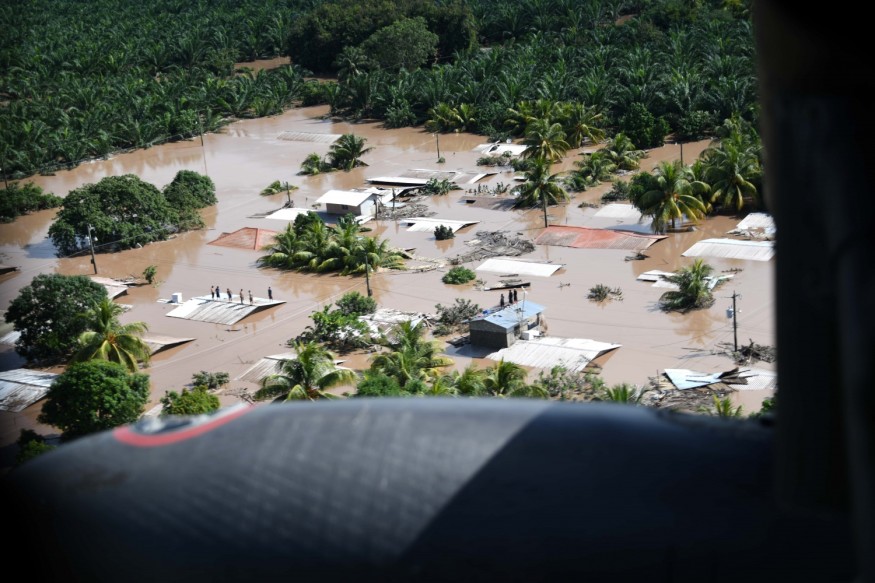Tropical Storm Iota is expected to become a major hurricane in the Caribbean and then hit Central America next week, slamming the regions that are still reeling from the devastation brought about by Hurricane Eta earlier this month, forecasters say.

READ: Tropical Storm Eta About to Make the Fourth Landfall in Florida
Tropical Storm Iota and life-threatening rainfall
On Friday, the National Hurricane Center said that Iota formed at sea and centered in the Caribbean, about 480 miles east-southeast of the Nicaragua-Honduras border. It has maximum sustained winds of 60 mph as of Saturday, 4 PM ET.
Iota will be heading west and is expected to make landfall in Central America near the Honduras-Nicaragua border by late Monday or early Tuesday, CNN meteorologist Tyler Mauldin said.
NHC said that the storm is expected to be a major hurricane strength at 111 mph as it makes landfall across Central America. It will also bring life-threatening flash floods and river flooding, and landslides in higher terrain areas.
Nicaragua and Honduras are warned that Typhoon Eota may bring torrential rains that could reach a total of 2 to 3 feet and life-threatening storm surge.
Typhoon Iota will also bring damaging winds and possibly 8 to 6 inches of rain on Honduras, modern Nicaragua, eastern Guatemala, and southern Belize through Thursday.
On the other hand, Costa Rica, Panama, and northern Colombia are expected to four to eight inches of rain on Thursday. In comparison, El Salvador and southern Nicaragua are expected to have two to four inches.
In response to the advisory, the government of Colombia issued a tropical storm warning on Saturday for the islands of San Andres and Providencia.
Still reeling from Hurricane Eta
Tropical Storm Eota is expected to follow Hurricane Eta's path, which slammed Nicaragua on November 3 as a Category 4 hurricane. It also swept Honduras, Guatemala, and Belize for days with torrential rains causing landslides and flooding.
The hurricane claimed the lives of at least 120 people in parts of Central America and Mexico. It then caused havoc across Cuba, the Florida Keys, and the Gulf of Mexico before hitting Cedar Key, Florida, and the Carolinas.
In San Cristobal, Guatemala, dozens of people were missing after a landslide last week, leaving mud about 50 feet deep in some places. The Eta impacted more than 3.6 million people all over Central America, the Red Cross said.
In the US, there was one death linked to Eta in Bradenton Beach. The victim, Mark Mixon, stepped into his flooded garage as he was laying sandbags around his home and was electrocuted.
Firefighters in Tampa had to rescue people who got stuck in storm surge along a boulevard. Several vehicles were stuck on a roadway, and neighborhoods experienced enough flooding to evacuate.
Several boats were washed ashore in Gulfport, Florida.
Forecasters predict that Tropical Storm Iota could quickly strengthen to major hurricane strength as it approaches Central America on Sunday or Monday and may wreak more devastation in areas where people are still reeling from the grappling effect of Eta.
READ NEXT: The Danger Posed by Super Typhoons Such as Typhoon Goni in the Philippines
Check out for more news and information on Hurricanes on Nature World News.
© 2025 NatureWorldNews.com All rights reserved. Do not reproduce without permission.





